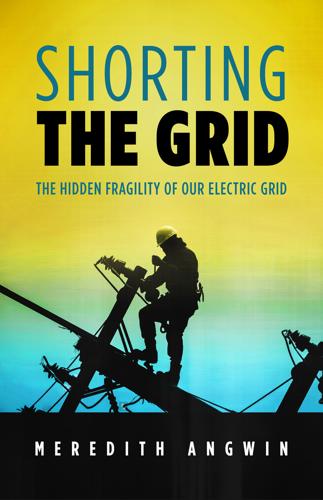
Shorting the Grid: The Hidden Fragility of Our Electric Grid
by
Meredith. Angwin
Published 18 Oct 2020
utm_source=VBM+Mailing+List&utm_campaign=a815d3902e-ENEWS_2019_11_15&utm_medium=email&utm_term=0_b5e56b36a4-a815d3902e-286677853. 163 “Integrating Markets and Public Policy,” New England Power Pool (website), undated, http://nepool.com/IMAPP.php. 164 “The renewable energy credits market: where to buy RECs,” energysage (website), updated June 7, 2019, https://www.energysage.com/other-clean-options/renewable-energy-credits-recs/where-to-buy-renewable-energy-credits-recs/. 165 “SREC Markets, Pennsylvania” SRECTrade (website of Superior Clean Energy Management), undated, https://www.srectrade.com/markets/rps/srec/pennsylvania. 166 James D. Bride, New England CLG presentation, Energy Tariff Experts LLC, December 1, 2016, https://www.iso-ne.com/static-assets/documents/2016/11/2016_12_01_clg_meeting_jim_bride_panelist_presentation.pdf. 167 Energy Tariff Experts LLC (website), http://energytariffexperts.com. 168 Press Release by ISO New England: “New England’s Wholesale Electricity Prices in 2017 Were the Second-Lowest Since 2003,” ISO New England (website), March 6, 2018, https://www.iso-ne.com/static-assets/documents/2018/03/20180306_pr_2017prices.pdf. 169 John Dillon, “Small Utilities Say Subsidized ‘Net-Metering’ Projects Could Trigger Rate Increases,” VPR (website of Vermont Public Radio), September 4, 2018, https://www.vpr.org/post/small-utilities-say-subsidized-net-metering-projects-could-trigger-rate-increases#stream/0. 170 “FERC approves formula for BPA curtailment of wind generation in favor of excess hydro,” Hydro Review (website), October 24, 2014, https://www.hydroreview.com/2014/10/24/ferc-approves-formula-for-bpa-curtailment-of-wind-generation-in-favor-of-excess-hydro/.
…
Reliability Must Run (RMR): An agreement made between the RTO and a generator owner requiring that the generator continue to operate, even when it is not economical to do so. The agreement assures system reliability and that the generation owner recovers the costs of operation. Renewable Energy Certificate: Renewable Energy Credit. Renewable Energy Credit (REC): A certificate which represents actual electricity generation from a grid-connected, renewable source. Renewable sources are defined by the state. These certificates can be sold and traded. Their value can be set by a REC market or by state regulations. Renewable Portfolio Standard (RPS): A state policy target requiring that distribution utilities meet the demand for electric energy by utilizing a certain percentage of renewable resources.
…
Its coverage includes the United States, Canada, and part of Mexico. NYISO: New York ISO. ohm: A measure of electrical resistance. out-of-market compensation: Payments received by generators that do not go through the market bidding process. These can be payments for Reliability Agreements, Renewable Energy Credits, or other payments not directly related to buying and selling energy, capacity, or ancillary services. out-of-market revenue: See out-of-market compensation. peak-load generating unit: A generating unit that is used to meet system requirements during peak-load periods, when the demand on the system is the greatest.
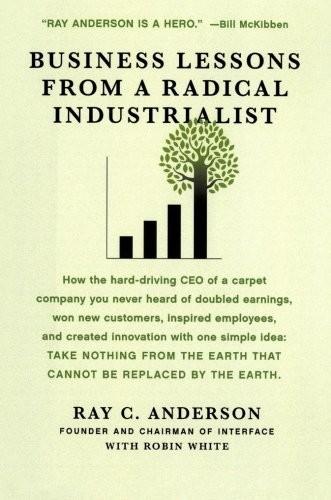
Business Lessons From a Radical Industrialist
by
Ray C. Anderson
Published 28 Mar 2011
Every one of our European plants runs off 100 percent green power, straight off the grid. Third, we can invest in off-site renewables to green our energy mix. We’re not hooked up directly to windpower generating stations in North Dakota or New Zealand, but we can buy renewable energy credits (REC) from utilities that are. Whether we generate it ourselves or pay someone else to, the earth wins. What are renewable energy credits? I’ll talk about RECs in the chapter on greening your power, but generally speaking they’re tradable certificates that represent a subsidy for a certain amount of renewable electricity (usually one megawatt hour). Using RECs, ordinary grid power takes on certified green benefits that stay with the electrons and the resulting power that is delivered to the user.
…
They are: • Bentley Prince Street, City of Industry, California, where renewable energy supplies 100 percent of the plant’s electricity requirements from an on-site solar photovoltaic array and renewable energy credits (RECs), which help make wind, solar, and biomass viable alternatives; • InterfaceFLOR Commercial, LaGrange, Georgia (two locations), with 100 percent of the electricity used in manufacturing coming from Green-e–certified renewable energy credits, biomass, and on-site solar photovoltaics; • InterfaceFLOR Commercial, West Point, Georgia, gets 100 percent of the electricity for its manufacturing processes from wind, biomass, and Green-e–certified RECs; • InterfaceFLOR Commercial, Belleville, Ontario, 100 percent renewably powered through wind energy RECs; • InterfaceFLOR in West Yorkshire, UK, with 100 percent of the plant’s entire heat and power needs supplied by wind and biodigester gas; • InterfaceFLOR, Craigavon, Northern Ireland, receives 100 percent of its electricity from wind power; • InterfaceFLOR, Scherpenzeel, The Netherlands, derives 100 percent of its electricity from wind and an on-site solar photovoltaic array.
…
Since we began in 1996, with a carefully determined baseline, our net greenhouse gas emissions are down 71 percent in absolute tonnage (and please remember how some folks claimed the 7 percent reduction called for by the Kyoto Protocol was just not possible). And 40 percent of this reduction has come from eliminating waste, improving operating efficiency, and substituting renewable forms of energy for fossil fuels. The remaining 60 percent has come from verifiable offsets, not counting renewable energy credits. As I said earlier, if we also took credit for the RECs we purchase, Interface would be essentially climate neutral. Furthermore: • We’ve cut our wastewater stream by 72 percent when measured against units of production (a square yard of carpet). What comes in will go out, so this is also our reduction in freshwater usage

The Entrepreneurial State: Debunking Public vs. Private Sector Myths
by
Mariana Mazzucato
Published 1 Jan 2011
Historically, different types of government policies have played important roles in the origins of many green technologies. To illustrate this point the next chapter looks at the history of two renewable energy technologies: wind turbines and solar photovoltaic (PV) modules. 1 US states, for example, often have the ability to ‘trade’ renewable energy credits (RECs), or securitized environmental benefits. The RECs permit states to meet their renewable targets through the purchase of RECs rather than by actual energy infrastructure change. While it is good to meet targets, there is no guarantee that doing so will be achieved with state-based supply chains or companies, leaving many of the economic benefits of ‘going green’ on the table. 2 Martinot (2013, 9) shows that renewable development targets are a useful proxy for tracking which countries are most aggressively pursuing a renewable energy/low-carbon agenda: ‘120 countries have various types of policy tragets for long-term shares of renewable energy, including a binding 20% target for the European Union’ while countries like ‘Denmark (100%) and Germany (60%)’ and China are moving even further towards a green transistion for no later than ‘2030 or 2050’. 3 Some examples include water wheels, windmills, the sail, and wood burning for heat or steam.
…
‘me too’ 64–7; see also pharmaceutical companies (‘pharma’); specific drugs Duhigg, Charles 173–4 DuPont 178–9 economic crisis: boosting clean technologies 142–3; causes of 12, 182; public sector blamed for 15, 17; varied impact of in EU 41 Economist, view on State and enterprise 16 ‘ecosystems’: see innovation ecosystems electric cars/vehicles 108, 123, 124, 133 Electric Power Research Institute (EPRI) 151 Elias, John 102–3 email 104 End of Laissez Faire, The (Keynes) 4, 194 endogenous growth theory: see ‘new growth’ theory energy crisis 137, 144–5; see also green industrial revolution Energy Frontier Research Centers (EFRCs) 133 Enron 148 ‘enterprise zones’ 54 ‘entrepreneurial’ State: building of 54, 196–7; growth and inequality in 183; risk assumption and vision of 24; role of 6, 10, 21, 23; see also State Entrepreneurial State, The (report) 2, 3 entrepreneurs: DARPA’s brokering role with 77; financing of 57; investment choices of 136; myth of in Silicon Valley 63; risk types and 58–9; SBIR funding to 80, 188 EPA (Environmental Protection Agency) 150 equitable growth 13, 177, 185 European Organization for Nuclear Research (CERN) 101 ‘European Paradox’ 53 European Union: approach to green initiatives 124; ‘Big State’ behind innovation in 166; feed-in tariffs in 153; ‘fiscal compact’ of 42, 197; green transition targets in 115n2; gross R&D spending as percentage of GDP 43; growth producing spending in 196; investment in renewable energy 120, 121; public sectors in 17–18; R&D targets of 41; weaknesses of countries in 52–3 Evans, Peter 4 Evergreen Solar 151–2, 162 Evolutionary Theory of Economic Change, An (Nelson and Winter) 34–5 ‘evolutionary theory’ of production 34–5 ‘exogenous growth theory’ 34 externalities 4, 7, 21, 168; see also Apple Fadell, Tony 100n8; see also Apple Fairchild Semiconductor 76 fast Fourier transform (FDT) algorithm 109 feed-in tariffs: in energy technology 114; in European markets 153; German 122, 138, 149, 156; policy changes in 125n7; UK 124 Fert, Albert 96 Fiegerman, Seth 171n3 finance firms 182 financialization 25–8 FingerWorks 103 Finland 120n4, 121, 190 First Solar (formerly Solar Cells Inc.) 128–9, 151, 159–60; see also green industrial revolution Fiscal Investment Loan Program (Japan) 40 flat panel display (FPD) industry 106 Florida, Richard 107 Forbes on WuxiSuntech 153 ‘Fordist’ model of production in 38–9 Foxconn 170–71 France 61, 120, 120n4, 121 Freeman, Chris 193 Fuchs, Erica 133 Funding a Revolution: Government Support for Computing Research 63 G4S, security company 16 game theory 36 GDP, balance in categories of 30 Gedser turbine 145 Genentech Inc. 57, 69, 81 General Electric (GE) 125, 137, 147–8, 160–61, 174n5 general purpose technologies (GPTs) 62, 83 Genzyme 81, 181 Germany: feed-in tariffs 122, 138, 149, 156; government energy R&D spending 121; green revolution in 115n2, 116, 120, 122; long-term support provided by 158; public R&D spending in 61, 144–6; solar resources of 144; State investment bank 190; systems of innovation in 37; wind energy and R&D projects in 144–6, 149, 156 Ghosh, Shikhar 127 giant magnetoresistance (GMR) 96–7 GlaxoSmithKline 66–7, 82 Global Wind Energy Council (GWEC) 138–9 Goldwind 149 Goodenough, John B. 108 Google 20, 174–5 government energy R&D spending 121, 121 GPS (global positioning system) 105, 105n12 Great Transformation, The (Polanyi) 194–5 Greece, R&D/GDP 52 Green, Martin 152 green industrial revolution: ARPA-E 133–5; ‘carbon lock-in’ 117; China’s ‘green’ 5 year plan 122–4; climate change 117, 123, 135; development banks funding of 139–40, 139n14; DoE role in 132–3; Economist on 16; financial commitment for 116; funding of 116–19; global new investment in renewable energy 120; government energy R&D spending 121; government support to 114–15, 119, 129, 141–2; hurdles to 138, 156, 160; leaders in 11–12, 126; national approaches to 119–22; ‘No More Solyndras Act’ 130–31n12; patient capital 138–40; policies impacting 113–15, 119; pushing green development 136–7; renewable energy credits (RECs) 115n1; smart grid technology in 115, 118; sustainability 117, 119, 123; UK’s approach to 124–6; US approach to 126–35; venture capital in 127–9, 128n9; venture capital subsectors in 128; see also clean technology; solar power; wind power Green Investment Bank 125n7 Gronet, Chris 151 growth: economy-wide 62; effect of venture capital on 49; of firms and R&D benefit 44; firm size relationship to 45–6; ‘inclusive’ 167, 183, 195; inequality and 31, 54, 177; innovation as key source of 9, 177; measures of 33; myths about innovation and 10; national debt relationship to 18; ‘smart’ 167, 183; and technology 33–4; theories of 33–4; variables important for 18; see also equitable growth Grünberg, Peter 96, 97 Grunwald, Michael 113, 136 Haltiwanger, J 45 Hamilton, Alexander 73 Hanwha Group 157 hard disk drives (HDD) 96–7, 109 Harrison, Brian 154 Harrod, Roy F. 33 Haslam, Karen 171n3 Heymann, Matthias 145 Hoffman Electronics 150, 150n4 Hopkins, Matt 129n10, 160 House of Commons Energy and Climate Change Committee 125 Hsieh, Chang-Tai 46 HTTP/HTML 103–5, 109 Hughes, Alan 45 Hurst, Samuel 101 IBM 50, 97, 104, 107 ‘iGesture Numpad’ 103 Ill Fares the Land (Judt) 1 Immelt, Jeffrey 126 income-contingent loans and equity 189–90 income distribution 30n1 India 45–6, 120 industrial policy: challenges to 13; decentralized 78; in ‘rebalancing’ of economies 27; recent US history of 10, 21; redistributive tools needed in 167; State led 40; see also ‘picking winners’ inequality: as debilitating economic issue 177; growth impacted by 31; reducing 166, 186; shareholders as source of 183; tax cut impact on 54 information and communications technology (ICT) 50, 118 Information Processing Techniques Office (DARPA’s) 76 Innovalight 158 innovation: collective character of 183–7, 193; ‘culture’ of 87; as cumulative 167, 187; Death Valley stage of 47, 48, 122; development banks fostering 139–40; development of 3, 41–2; and distribution 186; economic growth driven by 9; firms resisting pressure for 77; global process of 155; government support for 31; in Japan 37–8; macro models on 44; myths about 10, 22; myths of R&D being about 44; ‘open innovation’ model of 25, 27; patent increase relationship to 50–51; process in energy technology 114; Schumpeterian innovation economics 5; State as a force in 5, 166; State leading in risky 62–4; stock market speculation and 49–50; tax policy impact on 51; threatened in US 24; undermining of in US 53, 183, 187; US 24; see also ‘systems of innovation’ approach innovation ecosystems: cumulative innovation curve in 167–8; open systems 193; socioeconomic prosperity dependence on 179; symbiotic vs. parasitic 23–5, 155, 162–3, 179; types of 2; see also actors ‘innovation fund’ 189 innovation networks 36, 40 innovation policy 22–3, 44, 46, 54, 167 Inquiry into the Nature and Causes of the Wealth of Nations, An (Smith) 1; see also ‘Invisible Hand’ Institute for Fiscal Studies (IFS) 51–2 institutional change, assessment of 36 integrated circuits 98, 98n6 Intel 130n11 intellectual property protection 110 intellectual property rights 174 International Bank for Reconstruction and Development (IBRD) 5 Internet: Apple’s use of 109; commercialization of 22; DARPA’s role in 76; and HTTP/HTML 103–5, 109; origin of 63; public funding behind 105 interventionist policy 83 investment returns, social vs. private 3–4 ‘Invisible Hand’ 30 iOS mobile operating system 89–90 iPad 102, 105, 109, 111n14 iPhone 101–3, 105–6, 109 iPlayer 16 iPod 95–6, 100–102, 105, 109, 110 Ireland 120n4, 121, 121 IRS 529 plans 111, 111n15 Italy 17, 39, 41, 52, 121 Jacobs 149 Janeway, William H. 49–50 Japan: Apple entering market of 110; computer electronics competition by 97, 98, 98n7, 106–7; economic growth of 37–8; finance system coordination by 40; flat panel display (FPD) industry of 106; government energy R&D spending 121; lithium-ion battery perfection by 108; MITI 37–8, 40; public R&D spending in 61; systems of innovation in vs.
…
Soviet Union 37, 39; market failure theory applied to 61; as measure of innovation performance 34, 41; myth of business investment requirements 53–5; myth of innovation being about 44, 159–60; as not enough 142; of pharmaceutical companies 25–6, 188; R&D/GDP 52; SEMATECH funding 99; spending differences 42; of struggling OECD countries 41; technological change investments 59; in wind energy projects 144–5; worker tax credit 54 R&D/GDP 52 R&D Magazine 63 redistributional policies 31 Reenen, John van 46 Reinert, Erik 9n3, 38n5, 73 Reinhart, Carmen 17–18 renewable energy credits (RECs) 115n1 Renewable Portfolio Standards 114 ‘repatriation tax holiday’ 175 ‘representative’ agent 60 research 60, 78, 84, 136; see also science rewards, socialization of 156 risk 58–62, 70; see also socialization of risk risk landscape 22–3, 58, 194, 198 risk–reward nexus framework 186 risk–reward relationships: Apple and the US government 167–8; collective vs. private benefit 165–6, 196; corporate success resulting in regional economic misery 176–8; need for functional dynamic in 182–3, 197–8; overview 165–7; State recognition in 12 Robinson, Joan 34 Roche 82 Rock, Arthur 94 Rodrik, Dani 27, 28 Rogoff, Kenneth 17–18 Roland, Alex 98n7 Roosevelt, Franklin D. 6, 74 Royal Radar Establishment (RRE) 101 royalties 188–9 Ruegg, Rosalie 148 Ruttan, Vernon 62–3 Sanofi 69 Schmidt, Horace 92, 92–3; see also Apple Schumpeter, Joseph 10n4, 31, 35, 58 Schumpeterian innovation economics: creative destruction concept in 10, 10n4, 58, 165; extended protection in 189; influence of on BNDES 5; investment role in 31; macro models of 44; ‘systems of innovation’ view of 35–6; theory of 36n4 science 49, 51, 57, 59n1, 69; see also research Seagate 97 Segal, David 170 Semiconductor Manufacturing Technology (SEMATECH) consortium 99 Shapiro, Isaac 170–71, 171n2 share buybacks 25–7, 67, 171, 175 shareholder-value ideology 184, 186 Shiman, Philip 98n7 Shi Zhengrong 141, 152–4 Shockley, William 76 Silicon Valley 20, 63, 78, 95 Silver, Jonathan 129, 154 SIRI 103, 105–6, 109 SITRA, Finnish Innovation Fund 190 small and medium enterprises (SMEs) 10, 45–6, 45n6, 111n13 Small Business Administration (US) 94 small business associations 19 Small Business Innovation Development Act of 1982 79 Small Business Innovation Research (SBIR) (US) 20, 47, 79–81, 80, 188 Small Business Investment Company (SBIC) (US) 94 Smith, Adam 30; see also Adam Smith Institute; Inquiry into the Nature and Causes of the Wealth of Nations, An; ‘Invisible Hand’ socialization of risk and privatization of rewards: as cause of inequity and instability 185; direct or indirect returns of 187–91; framework for change of 185–7; income-contingent loans and equity 189–90; in the innovation economy 3; ‘innovation fund’ creation 189; IPR 189; mapping innovative labour into division of rewards 184–5; in pharmaceutical development 181; in public–private partnerships 27; skewed reality of risk and reward 181–5 social vs. private returns on investment 3–4 solar power: see wind and solar power Solow, Robert M. 33–4 Solyndra 129–32, 151, 154–5, 162; see also clean technology; ‘No More Solyndras Act’ Something Ventured, Something Gained (documentary) 78 Sony 108 Soppe, Birgit 146 South Korea 40, 61, 120–21 Soviet Union 37–9, 39, 76 Spain 120n4, 121, 121, 157 Spectrawatt 130n11, 162 spillovers 194 spinoff business model 76 SPINTRONICS 97, 97n5 Sputnik launch 76 Stanford Research Institute (SRI) 105–6; see also SIRI State: administrative role of 6, 12; attracting talent 12; capitalintensive investment by 27; ‘crowding in’ of 5–6, 8; ‘Developmental State’ 10, 37–8, 37–8n5, 40, 68; ‘directionality’ provided by 32n2; ‘dynamizing in’ 8; economic role of 1, 29; flexibility of 195–6; funding: see individual US agencies and departments; industrial directives of 21; as leading entrepreneurial force 193; market creation by 62, 167; organizational dynamics consideration 197; performance indicators lacking for 194; as private sector partner 5; response to criticism 19; responsibilities of 13; scope of endeavours of 18–19, 195; sectors funded by 63, 83, 196; targeted catch-up policies of 40; views of 9; see also ‘entrepreneurial’ State; ‘picking winners’ State development banks 2–3, 5, 122, 137–40, 189–91; see also Brazilian Development Bank (BNDES); China Development Bank (CDB); KfW (German Development Bank) stock market 49–50 Strategic Computing Initiative (SCI) 98–9 strategic management 197 Stumpe, Bent 101 Sullivan, Martin A. 174 SunPower 151 Suntech of China 152–5, 152n5 supply-side policies 83, 113–15, 159 sustainability 117, 119, 123, 195; see also green industrial revolution Swanson, Richard 151 Sweden 121 ‘systems of innovation’ approach: defined 36; foundation of 35–7; market failure approach vs. 9–10, 61–2; need for 22; regional 39; State role in 74; see also innovation; innovation ecosystems; Schumpeterian innovation economics ‘systems’ perspective 196 tariffs 108, 157, 157n6; see also feed-in tariffs Tassey, Gregory 32 tax avoidance: by Apple 11, 12, 171–5, 188; corporate 173–5, 187; ‘tax gap’ 187, 187n1 tax breaks 45–7 tax credits: energy 114, 138; impact of on R&D 28, 52–4; and R&D 111n13; and R&E 110; wind and solar power 126n8, 145, 149 tax cuts 10, 19, 23, 54, 69 taxes: antidumping tariffs 108; business as dependent on 69; ‘carbon tax’ 114; Citizens for Tax Justice 174n5; citizens unawareness of uses of 166; global avoidance schemes 174, 174n5; incentives to biotech firms 81; innovation systems not supported by 187–8; insensitivity of investment to 30n1; IRS 529 plans 111, 111n15; ‘patent box’ policy 51–2; policies impacting SMEs 45; policy 51; ‘repatriation tax holiday’ 175; State return from 165; US tax code 174; see also private vs. social returns; risk–reward nexus framework Taxol 188 Tea Party movement 17 technology: causing creative destruction 58; commissioning of advances in 54; core enabler technologies of Apple 95; dual-use 97; and growth 33–4; impact of regions on national performance 39; interagency collaborations in 74; origins of Apple products 109; revolutions 125, 126; SIRI 103, 105–6; State leadership of strategy for 40; unique situations in 59; see also computer field; wind and solar power technology commercialized: from capacitive sensing to click-wheels 99–101, 100n9, 103; cellular 102, 104, 109; from click-wheels to multi-touch screens 102–3; digital signal processing (DSP) 109; GPS 105; GPTs 62; LCD 107–8; lithium-ion battery 108; resistive touch-screens 101; silicon ICs impact on 98; thin-film transistors (TFTs) 107–8; ‘zero-emission’ electric vehicles 108 technology policy 75 Technology Reinvestment Program (TRP) 97 TFP of India vs. 46 TFTs (thin-film transistors) 107–8 Thomas, Patrick 148 ‘trade wars’ 122, 131, 157 ‘traitorous eight’, the 76 Tulum, Oner: on biopharmaceutical industry 67, 69, 82; NIH spending data compilation of 25, 69; on orphan drugs 81–2 United Kingdom (UK): approach to green initiatives 124–6; BBC 16; BERD (business expenditure on R&D) in 24; Big Society theme of 15–16; clean technology investment by 120; energy strategies of 116; government energy R&D spending 121, 121; green revolution in 120; Medical Research Council (MRC) 20, 67; outsourcing in 16; public R&D spending in 61; R&D/GDP 52; sector specialties of 42; SME government support 45; SME performance in 46 United States: Air Force 98, 104, 105; American Energy Innovation Council (AEIC) 26; Apple’s risk– reward relationship with 167–8; Army 107; competitiveness decline in 176; energy policy 158; energy strategies of 116, 137; funding and innovation in 52; funding sources for basic research R&D in 61; funding sources for R&D in 60, 60–61, 60n2; green revolution in 120; ‘hidden Developmental State’ in 38, 38n5; innovation threatened in 24; systems of innovation in 37; tax code 174; tax system 172; ‘trade wars’ of 122, 131, 157; types of venture capital successes in 49; undermining of innovation in 53; wind capacity of 143; see also taxes; specific agencies and departments of University of Southern California 77–8 UNIX 104 USSR: see Soviet Union US Windpower (later Kenetech) 147 Valentine, Don 94 Vallas, Steven P. 67–8 value: extraction 26, 42, 162; measures of 34 Venrock 94 Vensys Energiesysteme 149 venture capital: in Europe 53; Europe’s lag attributed to lack of 20; exit opportunities 48, 67, 81, 130, 138; failure of 107; government stimulation of 116; impatience of 129–32, 146n2; limited role of 131, 138; myth of as risk loving 47–50, 142, 161–2; and NASDAQ’s coevolution 50; presenting as lead risk taker 183; public vs. private 19, 47; short-termist approach of 108, 127; timing of investment by 23; Venrock 94; see also private sector venture capital sector investment: clean technology 161; green revolution 127–8, 128n9; in Solyndra 130; subsectors of within clean energy 128 venture capital stages of investment 47, 48; early stage and seed funding awards by 80; risk of loss in 48 Vestas: Denmark producing 143; DoE research influence on 148; early years of 147; patents purchased by 145; policy responses by 125, 137; rugged designs of 146 vision: Apple’s 93, 94, 99–100; ‘green’ 116, 120, 123; lack of 107; in nanotechnology 83–4; State’s 21–4, 58, 62–4 Warburg Pincus 50 Washington Consensus 40 Washington Post 57 Wayne, Ronald 89, 89n1; see also Apple welfare state institutions 31 Westerman, Wayne 102–3 Westinghouse 107 wind and solar power: clean technology in crisis 158–9; collective failure in 163; decline of US firms in 144, 144n1; grid parity in 141; networks of learning in 146n2; R&D myth in 159–60; small being beautiful myth in 160–61; solar bankruptcies 153–6; symbiotic innovation ecosystems in 162–3; venture capital myth in 161–2; from ‘Wind Rush’ to rise of China’s wind power sector 144–50; withdrawal of government support 149; see also specific corporations; clean technology wind and solar power markets: competition, innovation and market size 156–8; disrupting existing markets 161; global market for 143; growth opportunities in 156–7; growth powered by crisis 142–4; and manufacturing of 144, 146–7, 153 wind and solar power policies: California’s tax programme 147; fostering development 144–5; providing incentives 149–51; subsidies 148–9, 152; tax credits 145, 149 wind and solar power technology: aerodynamics of 148; computer use in 147–8; C-Si 129, 130n11, 151–2, 158; Denmark’s Gedser design 145; oil company role in 161n8; origins of solar technologies 150–53; remote power applications 150; research behind 148–9; see also clean technology wind energy R&D projects 144–6 Witty, Andrew 66–7 World Trade Organization (WTO) 40 World War II 74 Wozniak, Steve 89, 89n1, 94; see also Apple Wuxi-Guolian 152 Wuxi Suntech 153 Xerox 107 Xerox PARC 24 Zond Corporation 147–8 Table of Contents Halftitle Page Title Page Copyright Dedication Epigraph Contents List of Tables and Figures List of Acronyms Acknowledgements Foreword by Carlota Perez Introduction: Do Something Different A Discursive Battle Beyond Fixing Failures From ‘Crowding In’ to ‘Dynamizing In’ Images Matter Structure of the Book Chapter 1: From Crisis Ideology to the Division of Innovative Labour And in the Eurozone State Picking Winners vs.
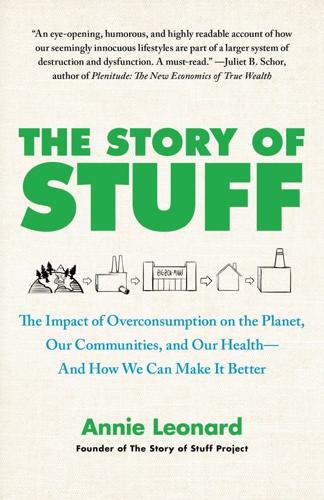
The Story of Stuff: The Impact of Overconsumption on the Planet, Our Communities, and Our Health-And How We Can Make It Better
by
Annie Leonard
Published 22 Feb 2011
Waste-to-Energy Plants Should Be Called Waste of Energy The latest fashion among incinerator proponents is to call them waste-to-energy plants, promising to burn up all that stinky garbage and turn it into energy, even claiming that garbage is renewable energy and these monstrosities should get renewable energy credits! Since we have too much garbage and not enough energy, that sure sounds appealing. But here’s the deal: first off, the little bit of energy recovered from burning trash is a very dirty energy, releasing far more greenhouse gases than burning natural gas, oil, or even coal. According to the U.S.
…
It’s simply not needed; technically viable and less polluting nonincineration alternatives exist for medical, municipal, and hazardous wastes. Instead, adopt a zero waste goal and invest in waste prevention, reuse, and recycling programs that conserve resources, reduce greenhouse gas emissions, and create jobs. Prohibit all scams aiming to give renewable energy credits or carbon offset credits to waste incinerators and landfill gas burning! To get involved, contact the Global Alliance for Incinerator Alternatives at www.no-burn.org. 5. For municipal wastes, implement pay-as-you-throw systems at the local level in which households and businesses pay more for waste disposal the more they throw away.

So Good They Can't Ignore You: Why Skills Trump Passion in the Quest for Work You Love
by
Cal Newport
Published 17 Sep 2012
With the project complete, Mike had to decide what to do next. Of the many valuable skills he picked up from the project, one in particular was a “deep understanding” of how the international carbon market works. As part of this expertise, he learned that the United States had an obscure exchange, known as the renewable energy credits market. “Almost no one understood these things; it was a really fractured market with huge information asymmetry,” he recalls. Being one of the few people who actually knew how this market worked, Mike decided to start a business. He called it Village Green. The idea was simple: You give money to Mike, he does complicated transactions that only he and a few other energy regulation wonks really understand, and then he offers you certification that you’ve purchased enough carbon offsets for your business to be deemed carbon neutral.
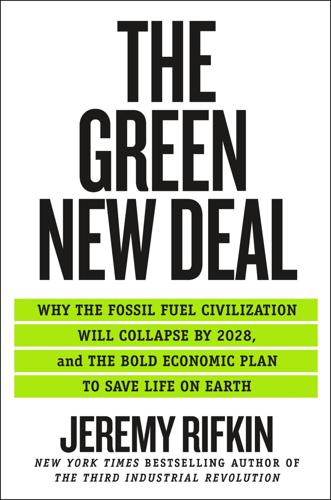
The Green New Deal: Why the Fossil Fuel Civilization Will Collapse by 2028, and the Bold Economic Plan to Save Life on Earth
by
Jeremy Rifkin
Published 9 Sep 2019
A quiet revolution has been occurring over the past several years below the national radar screen in states across the country. While the nation’s capital wasn’t looking, twenty-nine states and three territories adopted Renewable Portfolio Standards (RPS) requiring that a mandated percentage of the electricity sold by their utilities come from renewable energy sources.20 The states are backing up their RPS with renewable energy credits to encourage both wind and solar installations. Even though the United States government has dropped out of the Paris Agreement on climate change, nineteen states and Puerto Rico have thus far agreed to comply with the protocol, and other states are expected to soon follow.21 A number of governors are currently developing plans to get 100 percent of their electricity from zero-carbon sources.

Blockchain Revolution: How the Technology Behind Bitcoin Is Changing Money, Business, and the World
by
Don Tapscott
and
Alex Tapscott
Published 9 May 2016
Locally generated power, used locally, is significantly more efficient than the utility-scale model, which relies on transmitting energy across vast distances, where energy is lost. LO3 Energy is working with local utilities, community leaders, and technology partners to create a market where neighbors can buy and sell the local environmental value of their energy. “So, instead of paying an energy services company that’s buying renewable energy credits, you get to pay the people who are actually generating the electricity that is serving your house, that is local and green, and that actually has an environmental impact in your neighborhood. It seems a lot fairer, right?” said Orsini.7 Right! If you can locate each of the assets and assign locational value for generation and consumption, then you can create a real-time market.

Hope Dies Last: Visionary People Across the World, Fighting to Find Us a Future
by
Alan Weisman
Published 21 Apr 2025
In frigid Minnesota, these panels wouldn’t heat a house entirely, but they lowered firewood consumption or propane bills considerably. Since 2019, they’d been installing them on surrounding buildings. They were now even getting off-reservation clients. Winona started 8th Fire Solar, a community development nonprofit, to apply for renewable energy credits that must increase, she believed, if there’s a chance for a clean future. At James Bay, she had wed a Cree chief; together they fought hydroelectric plants on tribal land, but her travels proved a strain. They separated but remained married until his death by heart attack at 51. She brought their son and daughter back to Minnesota, had another son, and adopted three more boys.
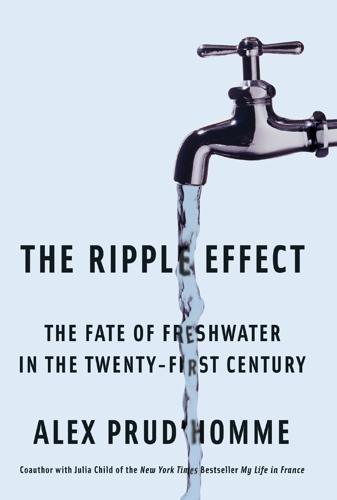
The Ripple Effect: The Fate of Fresh Water in the Twenty-First Century
by
Alex Prud'Homme
Published 6 Jun 2011
The plant will produce 50 million gallons of drinking water a day, enough for three hundred thousand residents, or about 8 percent of San Diego County’s water consumption in 2020. In keeping with the new emphasis on “blue,” or water-smart, technology, Poseidon will offset its footprint by building or remediating 66 acres of wetlands, planting trees, using efficient pumps, and purchasing renewable energy credits. The company intends its Carlsbad desalinator to be the first major infrastructure project in California to be completely carbon-neutral. MacLaggan had been pushing the plant through the permitting process for five and a half years, facing down protests, lawsuits, and negative editorials.